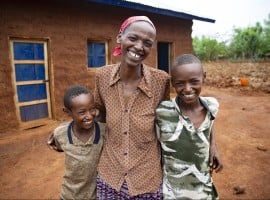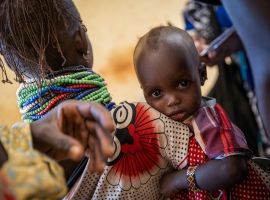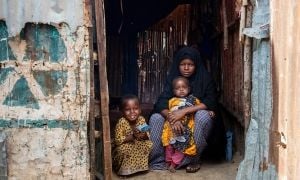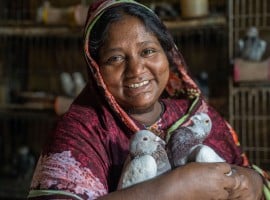
Read our 2024 annual report

Knowledge Hub
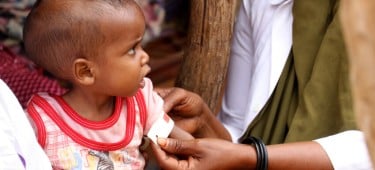
Hanaano Programme
Background
Child wasting, when a child is too thin for his or her height due to recent rapid weight loss or the failure to gain weight , remains a critical issue in the Mandera triangle. Despite ongoing humanitarian efforts, rates of acute malnutrition (AM) in the Mandera Triangle frequently exceed emergency thresholds. The Hanaano programme (meaning 'nurture' in Somali) is a 3-year cross-border initiative funded by Irish Aid as part of Ireland’s €50 million commitment under the Global Action Plan on Child Wasting.
Recognizing that addressing AM effectively requires investment beyond treatment, the programme takes a systems-based prevention approach that tackles the root causes of malnutrition.
Concern Worldwide, together with local partners the Rural Agency for Community Development and Assistance (RACIDA) in Kenya, Pastoralist Concern in Ethiopia, and Lifeline Gedo in Somalia, are implementing the Hanaano Programme across the Mandera triangle. The programme integrates nutrition, livelihoods, WASH, natural resource management, social and behaviour change, gender equality and conflict sensitivity approaches to prevent child wasting.
National and local government authorities along with the Inter-Governmental Authority for Development (IGAD) play a key role in implementation and coordination. The Hanaano programme's strategic research partnership with Tufts University further strengthens the programme through evidence generation and learning that will be shared with humanitarian and development partners, facilitating collective efforts to effectively combat child wasting.

Context
In the Mandera Cluster, rates of child acute malnutrition (AM) frequently exceed the humanitarian emergency threshold of 15%, signaling a persistent crisis despite the efforts of local, national, and international actors. While significant progress has been made in treating AM using Community Management of Acute Malnutrition (CMAM), up to 60% of treated children relapse within 6 months, illustrating the temporary nature of the current solutions and treatment-focused approaches. Failure to address these high levels of AM undermines Sustainable Development Goal (SDG) 2.2, which aims to reduce child AM to less than 3% by 2030. Without more sustainable, preventative solutions, millions of children will remain at risk of life-threatening malnutrition, perpetual cycles of poor health, reduced cognitive development, and economic vulnerability.
The Hanaano Programme is implemented in 105 communities across the Mandera Triangle; a vast tri-border region where Kenya, Somalia, and Ethiopia converge. It includes Somalia’s Gedo region, Ethiopia’s Liben and Afder Zones, and Kenya’s Mandera County. The area is hot, arid, and predominantly rural, populated by ethnic Somalis organized along clan lines. Rainfall is low, unreliable, and highly variable, making the region prone to droughts and floods that exacerbate food insecurity, acute malnutrition, and conflict risks.
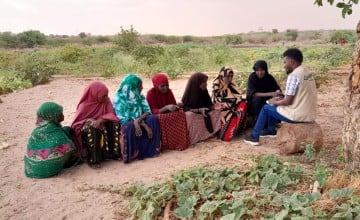
Partnerships
RACIDA (Kenya)
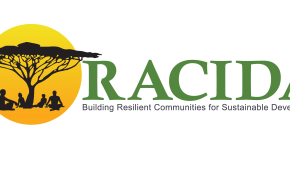
RACIDA (also known as the Rural Agency for Community Development and Assistance) is a Kenya‑registered and Nairobi‑based NGO founded in 2001, with extensive operations across Kenya (Mandera, Rhamu, Wajir), Ethiopia (Liben Zone, Dollo Ado), and Somalia (Gedo Region, Dollow). Their mission centers on strengthening self‑reliance and resilience in vulnerable agro‑pastoralist communities within arid and semi‑arid lands. Under the Hanaano programme, RACIDA is working closely in a new partnership with Concern Kenya as the implementing partner in Mandera County.

Lifeline Gedo (LLG) (Somalia)
Pastoralist Concern (PC) (Ethiopia)
IGAD
Tufts University
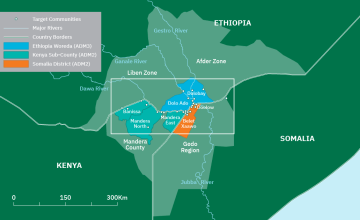
Programme Approach
Outcome 1: Households engage in behaviours to improve infant, young child, adolescent and maternal nutrition.
Outcome 1 is grounded in the understanding that improving household-level behaviours around nutrition, health, hygiene, and care practices is central to preventing child wasting. This outcome focuses on the immediate causes of wasting (inadequate dietary intake and illness), while also tackling underlying causes such as poor care practices, unsafe environments, and gender inequality.
Under this outcome, the programme is supporting households to adopt improved nutrition, health, hygiene, and care practices. This includes running behaviour change campaigns, strengthening peer support groups for mothers and fathers, conducting routine malnutrition screening and referrals, improving access to safe water and sanitation, and promoting gender equality through community dialogues and male role model engagement.
Outcome 2 - Households achieve improved food security and financial inclusion by engaging in profitable, climate-resilient livelihood strategies that effectively reduce wasting.
Outcome 2 addresses the basic drivers of child wasting—poverty, food insecurity, and environmental degradation—as outlined in the UNICEF causal framework. By promoting sustainable natural resource management, supporting climate-resilient agriculture and livestock systems, and expanding income-generating opportunities for women and youth, the programme aims to increase household food availability, income, and resilience. These changes strengthen caregivers’ capacity to provide nutritious diets and stable care, helping to prevent wasting by tackling the economic and ecological foundations that undermine child nutrition.
Outcome 3- Local evidence on what works informs relevant country and regional wasting prevention strategies.
Outcome 3 focuses on ensuring that local knowledge, lived experience, and programme-generated evidence actively shape broader strategies to prevent child wasting—locally, nationally, and globally. The underlying theory of change is that sustainable, scalable impact requires more than service delivery; it depends on evidence-informed decision-making and meaningful community participation in governance and advocacy. This outcome bridges the gap between local action and systemic change.
There are two key pillars of this approach: Community-Led Evidence and Voice (Output 3.1): Communities are not just passive recipients of services—they are agents of change. The programme supports each community to develop and implement their own Nutrition-Sensitive Action Plans, which reflect their local priorities (e.g. clean water, kitchen gardens, feeding practices, access to markets).
Activities under this outcome include: 1) Supporting implementation of Nutrition Action Plans – for example, in some communities, this has led to local water point repairs or mothers’ groups coordinating backyard gardening or cooking demonstrations. 2) Helping communities raise their voice to demand services – such as enabling community representatives to engage directly with governance platforms like Kenya’s County Steering Groups, Ethiopia’s Woreda Nutrition Councils, or livestock stakeholder forums, where they advocate for resources and action based on their plans.
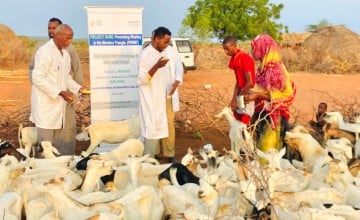
Integrated Frameworks
Locally Led Development: The Hanaano Programme is rooted in the principle of locally led development (LLD), recognising that communities are best placed to identify the challenges they face and the solutions that are most relevant to their context. Communities lead the planning and execution of interventions—from Mother-to-Mother Support Group led nutrition and Total Sanitation (CLTS) efforts to community-managed water infrastructure, Village Savings and Loan Association (VSLA) governance, and Natural Resource Management (NRM) committees. Farmer groups and permagardens are driven by women and local champions, and action planning under Outcome 3 ensures community voices shape priorities and accountability.
Humanitarian-Development-Peace Nexus: Operating in the Mandera Triangle—a fragile area shaped by climate shocks, political instability, clan conflict, and porous borders—the Hanaano Programme aims to strike a balance between long-term development goals with the need for responsiveness to crises. While building long-term systems in nutrition, agriculture, and governance, Hanaano also delivers immediate support through nutrition screening, the Crisis Modifier component, and emergency-capable training such as LEGS (Livestock Emergency Guidelines and Standards) and SEADS (Standards for Supporting Crop-related Livelihoods in Emergencies). This dual approach ensures continuity of development gains even in fragile conditions.
Systems Strengthening: In a region historically dependent on aid, the Hanaano Programme is designed to strengthen, not bypass, local systems. By equipping formal and informal institutions with tools, knowledge, and resources, the programme fosters self-reliance and long-term service delivery. Across the programme, Hanaano reinforces government, community, and private sector capacity. This includes training extension agents and health workers, linking farmers with seed and input suppliers, strengthening veterinary outreach through voucher models, and aligning community priorities with government plans. A focus on sustainability and ownership reduces aid dependency and strengthens resilience.
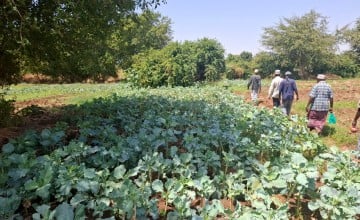
Research and Learning
Hanaano, in partnership with Tufts University and Kenyatta University, is conducting a one-year mixed-methods study that incorporates research and learning to better understand and address the drivers of acute malnutrition in the Mandera Triangle. The one-year research component (July 2025 – June 2026) includes six rounds of quantitative data collection (every other month) following the same household and all their children under the age of five. The quantitative component will be complemented with two rounds of qualitative inquiry. We will also use remote sensing data – precipitation, temperature, and vegetation – to better understand the temporal context in which to place the research year. The longitudinal quantitative data along with the qualitative inquiry will further allow us to explore the seasonal dimensions of AM and its drivers. The research will be complemented with learning and research uptake activities to disseminate and confirm the research findings on the community, local, national, and international level.
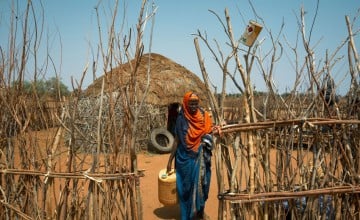
Emerging Lessons
1. Livelihoods are interdependent and shaped by a complex process of transformation.
Due to a range of structural pull and push factors, most of the households who settled in the past decade in the Daua River Basin, are adapting and diversifying, shifting from pastoralism to cultivation, but to varying degrees and at different paces. Resilience for the wider population in the Mandera Cluster depends on their pastoralist principles – particularly the management of variability, alongside livelihood diversification and adaptative strategies, and interdependence among diverse producers, markets, ecosystems, and social networks. Enhancing food security and nutrition in this region requires strengthening support for the entire livelihood system—one that is rooted in pastoralism yet evolving with ecological, social, and economic change.
2. As livelihoods transform, so do the risks.
Communities along the Daua and Ganale Rivers are adapting by combining settled cultivation with livestock production. However, this transformation comes with new challenges and new vulnerabilities, such as the need for new skills and resources, lack of knowledge about crop pests and diseases, limited market access and transportation, climate variability, increased labour demands on women with impacts on childcare practices, and reduced access to animal milk. Programmes and policy need to prioritize supporting sustainable and integrated livelihoods focused on crops and livestock as well as strengthen women’s economic inclusion and protection.
3. Informal institutions are strained but central to resilience
Informal institutions remain central to community resilience but are under increasing strain in the communities shifting from nomadic pastoralism to a mix of cultivation and livestock ownership. These traditional systems are struggling to adapt to increasingly settled communities, associated land disputes, and changing social structures. However, they are adapting through expanded social support networks and collaboration with formal actors, offering vital, context-responsive local governance where state systems remain weak. Programmes need to work with and strengthen, as opposed to ignore or undermine, these informal institutions.
4. Climate variability Is increasing, heightening risks for communities.
Rainfall patterns are becoming more erratic, with short rains increasing and long rains declining, leading to greater flood risks for newly settled farmers and worsening drought conditions for pastoralists. Rising climate unpredictability complicates livelihood adaptation strategies, putting Daua River Basin households and their women and child nutritional status at risk.
Future policies and programmes must be evidence-based, and context-specific.
Effective policies and programs must reflect local realities, support inclusive livelihood adaptation and diversification, consider women’s economic inclusion, promote crop-livestock integration, and work with informal institutions. Continued research is needed to guide context-specific strategies for long-term resilience. Uptake and research dissemination can then further enhance the knowledge and capacity of all stakeholders engaging with dryland livelihood systems.
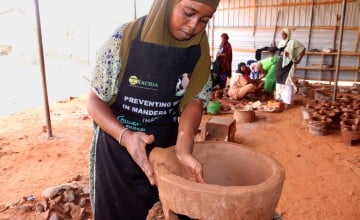
Learning Resources

Programme Partners
RACIDA
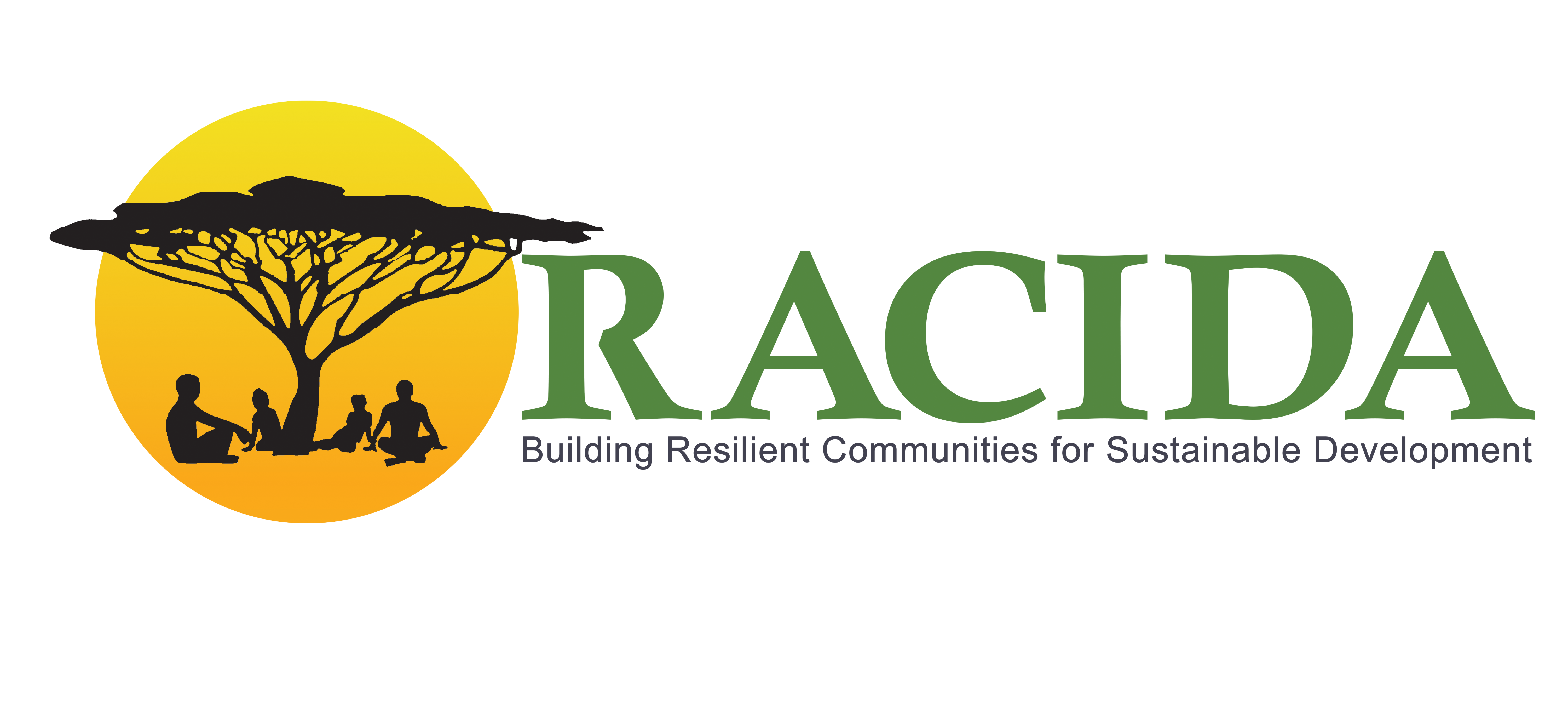
Tufts University

Pastoralist Concern

IGAD
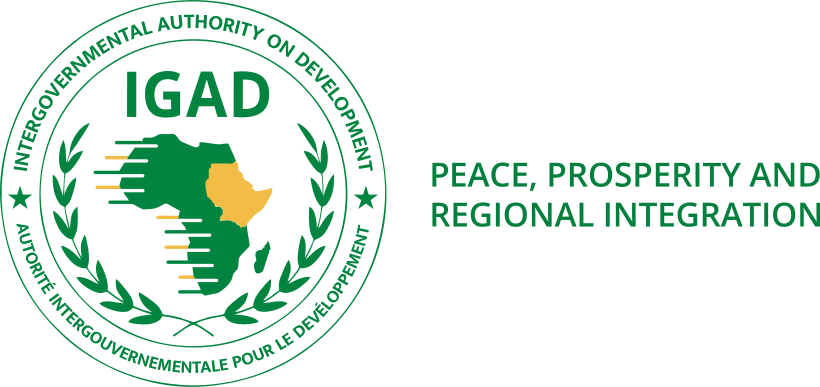
Lifeline Gedo
